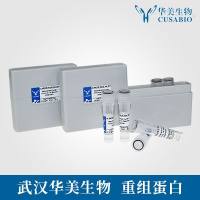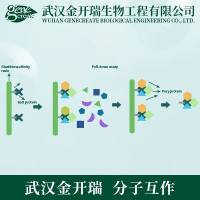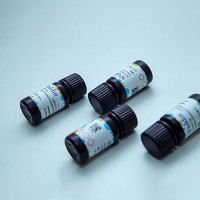一步法甲醛胶连检测蛋白质相互作用Protein Interactions Captured by Chemical Cross-linking: One-Step Cross-linking with Formaldehyde
互联网
| INTRODUCTION |
|
This protocol describes a method for chemical cross-linking of proteins using formaldehyde. With the exception of zero-length cross-linkers, formaldehyde has the shortest cross-linking span (~2-3 Å) of any cross-linking reagent, thus making it an ideal tool for detecting specific protein-protein interactions with great confidence. Despite its simple chemical structure (CH2 O), formaldehyde's single carbonyl group functions essentially as a homobifunctional reagent and is capable of conjugating targets through two different chemical pathways. In Mannich-type reactions, which typically require elevated temperatures (37°C or above) for a period of 2-24 hours for acceptable yields, formaldehyde condenses with amines (1°, 2°, or salts of ammonia) and compounds with active hydrogens to form stable cross-links. Formaldehyde also reacts with amines to form highly reactive immonium cations that are reactive toward protein-containing nucleophiles, including sulfhydryls, amines, phenols, and imidazoles. The latter reaction is more rapid than the former and is generally the more predominant in typical protein cross-linking reactions at ambient temperatures. |
| RELATED INFORMATION |
|
The reaction mechanism showing chemical cross-linking of proteins with formaldehyde via an immonium cation is shown in Figure 1 . <center> <br /> <br /> Figure 1. Chemical cross-linking of proteins with formaldehyde: the immonium cation mechanism.</center> |
|
MATERIALS |
|
Reagents |
|
|
Equipment |
|
|
METHOD |
|
|
TROUBLESHOOTING |
|
Problem: Cross-linking is nonspecific or excessive. [Step 6] Solution: If cross-linking is nonspecific or excessive, first try reducing either the concentration of the formaldehyde or the protein reactants to optimize complex formation. Other options include lowering the pH or reducing the reaction times to less than those used in the initial screen. Problem: No cross-linking is observed. [Step 6] Solution: If no cross-linking is observed, then increase the concentration of target protein in the reaction. Alternatively, use a different cross-linking agent. Problem: Cross-linking problems are observed when studying a complex protein mixture. [Step 6] Solution: When using complex formulations of proteins (e.g., from expression systems or whole cell lysates), it is important to check for the presence of high concentrations of detergents or reagents with nucleophilic side groups (e.g., the primary amines of Tris), as they may inhibit complex formation or compete for the reactive groups of the cross-linker, respectively. |
|
Anyone using the procedures in this protocol does so at their own risk. Cold Spring Harbor Laboratory makes no representations or warranties with respect to the material set forth in this protocol and has no liability in connection with the use of these materials. Materials used in this protocol may be considered hazardous and should be used with caution. For a full listing of cautions regarding these material, please consult: Protein: Protein Interactions, Second Edition: A Molecular Cloning Manual , edited by Erica A. Golemis and Peter D. Adams, © 2005 by Cold Spring Harbor Laboratory Press, Cold Spring Harbor, New York, p.105-127. |
| Copyright © 2007 by Cold Spring Harbor Laboratory Press. All rights reserved. No part of these pages, either text or image may be used for any purpose other than personal use. Therefore, reproduction modification, storage in a retrieval system or retransmission, in any form or by any means, electronic, mechanical, or otherwise, for reasons other than personal use, is strictly prohibited without prior written permission. |







